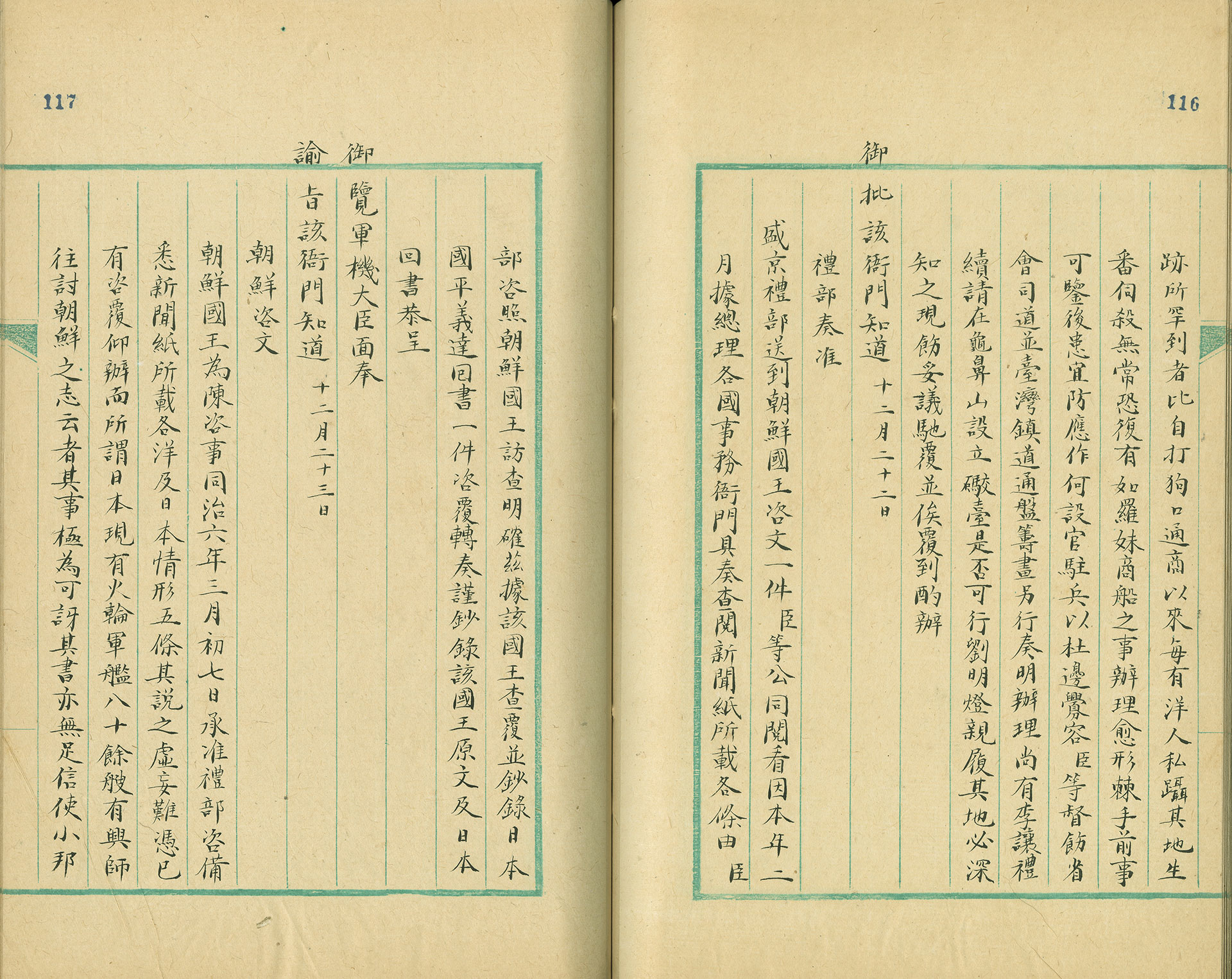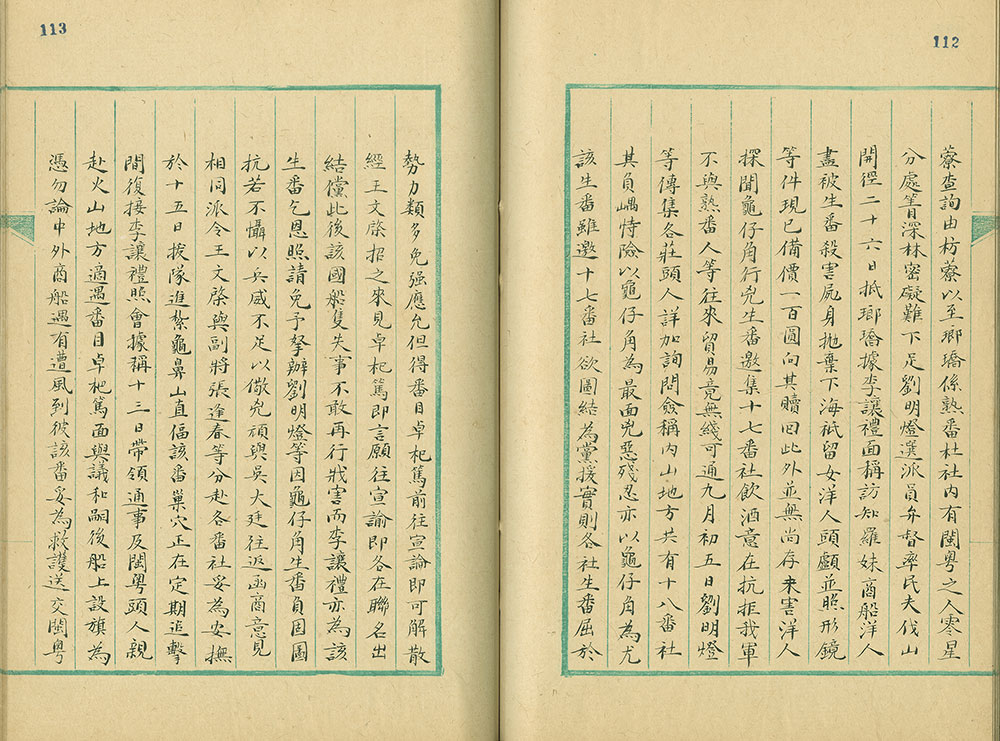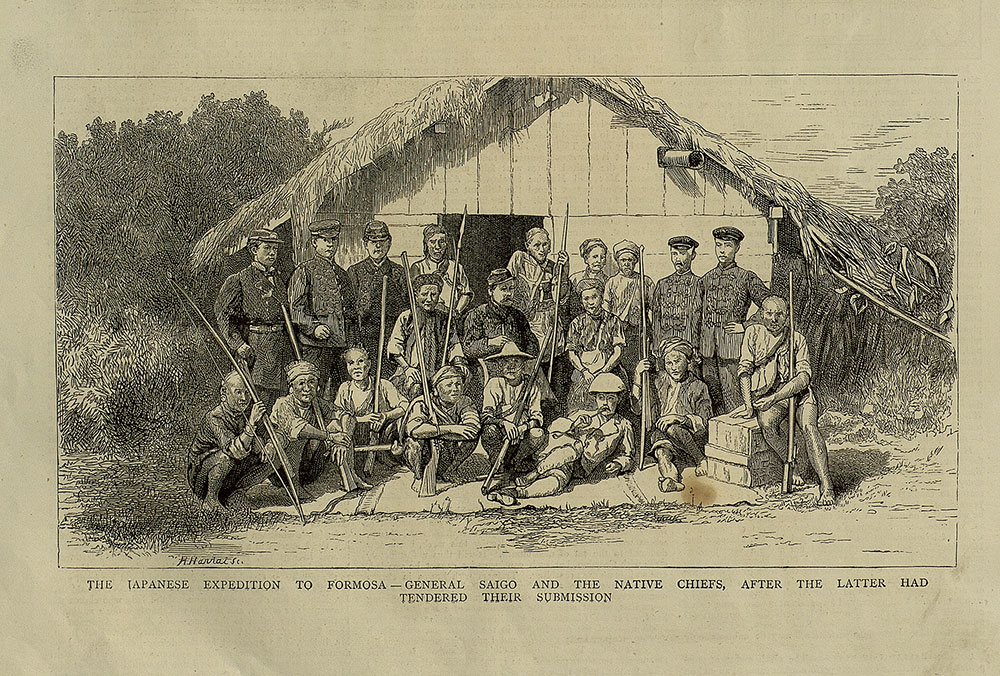Challenges for a New Age
In the middle of the nineteenth century, Western powers expanded in Asia and the Qing Empire was forced to open ports for commerce. In Taiwan, foreign powers intruded into the area "outside the boundary," leading to several conflicts. A major one occurred in 1867, when the U.S. merchant ship Rover was shipwrecked off the coast of the Hengchun Peninsula, where the passengers were massacred by indigenous peoples. This led the U.S. to send gunships to attack Hengchun, which was "beyond the boundary" of the Qing Empire at the time. The U.S. consul in Amoy (Xiamen), Charles Le Gendre, thereupon entered into an agreement with the aboriginal chief there. Then, in 1869, the British merchant James Horn and the German merchant James Milisch established a fortress from which to cultivate the plains around Nan'ao on the east coast. And in 1874, on the excuse of Ryukyuan sailors having been killed in 1871, the Japanese sent a punitive expedition to the Hengchun Peninsula to retaliate against the indigenous peoples (in what became known in Chinese as the "Mudan Incident"). The area "outside the boundary" that had been neglected by officials had become an increasingly worrisome trouble spot for the Qing Empire.
- The Management of Barbarian Affairs in its Entirety
- 12th month of the 6th year (1867) of the Tongzhi reign
The "Records of Foreign Affairs" was a compilation of foreign affairs-related documents during the Qing dynasty.
The grudge that southern Taiwan indigenous tribes had towards foreigners because of the killings of tribal members by them became the cause of the Rover Incident. American Consul to Macao, Le Gendre (1830-1899), came to Taiwan to negotiate the matter and the tribal leader Cuqicuq (?-1872) represented the indigenous people during the negotiation.
- The Japanese expedition to Formosa-General Saigô and the native chiefs, after the latter had tendered their submission
The original incident was reported in The Graphic: An Illustrated Weekly Newspaper on February 27, 1875. In 1874, the Japanese used the killing of refuges from the Ryukyu ship disaster by indigenous Taiwan tribespeople as an excuse to send three thousand soldiers to attack the Shimen Village indigenous tribe in Mudan Township. After two months of battles, the indigenous tribes in Shimen surrendered. A group picture was taken of the Japanese governor Saigo, the soldiers, and various tribal leaders.
Siago in the center, and Cuqicuq seated to the left.






